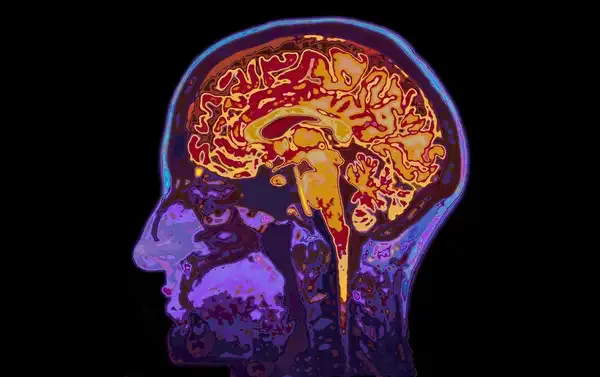Mental disorders as the mind’s ‘sticky tendencies’
"Mental disorders as the mind’s ‘sticky tendencies’" explores how certain cognitive patterns can lead to persistent mental health issues, emphasizing the brain's tendency to cling to negative thoughts and behaviors. In contrast, "The Big Apple" and the nicknames of eight other famous cities reveal the cultural and historical significance behind these monikers, illustrating how local identities are shaped by unique characteristics, events, or influences that resonate with residents and visitors alike, enriching their collective narrative.

Mental disorders can often be perceived as the mind's 'sticky tendencies,' where certain thought patterns and behaviors become entrenched, leading to challenges in daily functioning. Understanding these sticky tendencies is crucial for both individuals experiencing mental health issues and the broader community. In this article, we will explore various types of mental disorders, their characteristics, and how they can manifest in different forms.
Understanding Mental Disorders
Mental disorders encompass a wide range of psychological conditions that affect mood, thinking, and behavior. These disorders can disrupt daily life, affecting relationships, work performance, and overall well-being. Some of the most common types include:
| Type of Mental Disorder | Description | Common Symptoms |
|---|---|---|
| Anxiety Disorders | Characterized by excessive fear or anxiety. | Panic attacks, social avoidance, excessive worry. |
| Depressive Disorders | Involves persistent feelings of sadness and loss of interest. | Low energy, changes in appetite, feelings of hopelessness. |
| Bipolar Disorder | Characterized by mood swings ranging from depressive lows to manic highs. | Extreme mood changes, impulsivity, irritability. |
| Obsessive-Compulsive Disorder (OCD) | Involves unwanted thoughts (obsessions) and repetitive behaviors (compulsions). | Compulsive rituals, intrusive thoughts. |
| Schizophrenia | A severe disorder affecting how a person thinks, feels, and behaves. | Delusions, hallucinations, disorganized thinking. |
The Concept of 'Sticky Tendencies'
The term 'sticky tendencies' refers to the way certain mental patterns can become ingrained in an individual's psyche, making it difficult to break free from them. These tendencies can lead to maladaptive behaviors and reinforce negative thought cycles. For instance, individuals with anxiety disorders may find themselves stuck in a loop of worry, where the fear of potential negative outcomes leads to avoidance behaviors. Similarly, those suffering from depression may develop a mindset that reinforces feelings of worthlessness and hopelessness.
How Sticky Tendencies Develop
Sticky tendencies often develop through a combination of genetic, environmental, and psychological factors. Traumatic experiences, chronic stress, and significant life changes can all contribute to the formation of these patterns. For example, a person who has experienced a traumatic event may develop post-traumatic stress disorder (PTSD), characterized by intrusive memories and heightened anxiety. Over time, the brain may become wired to respond to certain triggers with heightened emotional responses, making it challenging to regain a sense of normalcy.
The Impact of Sticky Tendencies on Daily Life
The effects of sticky tendencies can permeate various aspects of an individual’s life. Here are some common impacts:
| Aspect of Life | Impact of Sticky Tendencies |
|---|---|
| Relationships | May lead to withdrawal or conflict due to misunderstandings and emotional distress. |
| Work Performance | Difficulty concentrating or managing stress may result in decreased productivity. |
| Physical Health | Chronic stress and anxiety can lead to physical symptoms like headaches and digestive issues. |
| Overall Well-being | A pervasive sense of dissatisfaction and unhappiness can diminish quality of life. |
Strategies to Overcome Sticky Tendencies
While overcoming sticky tendencies can be challenging, various strategies can help individuals regain control over their mental health. Here are some effective approaches:
- Cognitive Behavioral Therapy (CBT): This evidence-based therapy helps individuals identify and change negative thought patterns.
- Mindfulness and Meditation: Practices that promote awareness and acceptance can reduce anxiety and increase emotional regulation.
- Exercise: Physical activity is known to boost mood and reduce symptoms of anxiety and depression.
- Social Support: Building a robust support network can provide encouragement and understanding during difficult times.
- Medication: In some cases, medication may be necessary to manage symptoms effectively.
Conclusion
Understanding mental disorders as the mind's 'sticky tendencies' provides valuable insight into the challenges many individuals face. By recognizing these patterns and implementing effective strategies, it is possible to break free from the constraints they impose. Mental health is a journey, and with the right tools and support, individuals can work towards achieving a balanced and fulfilling life.












